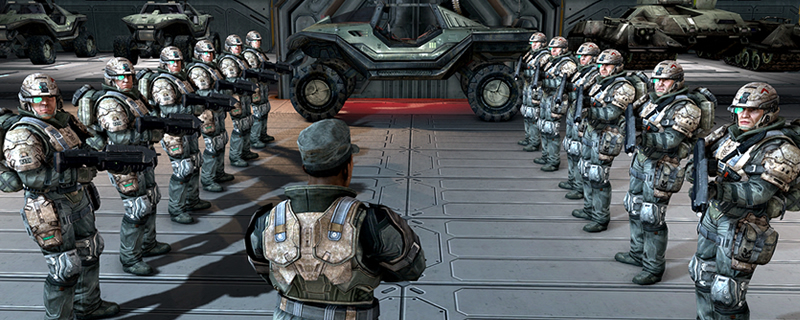Halo: Combat Evolved Anniversary PC Performance Review with AMD Ryzen APU Testing
Conclusion
A few years ago, PC gamers were convinced that the Halo series would never return to PC. Microsoft had locked the series to Xbox hardware, giving PC users little hope of ever playing the game, at least outside of emulation.
Now, things have changed. Halo: The Master Chief Collection has arrived on PC, and after the releases of Halo: Reach and Halo: Combat Evolved Anniversary (CEA), we can look forward to Halo 2: Anniversary, Halo 3, Halo 4 and Halo ODST coming to the platform. Even Halo: Infinite is due to receive a PC release, making Halo 5 the only game in the series to not be announced for Windows PC.
With the PC release of Halo: Reach, 343 Industries promised to deliver 60FPS support, an unlocked framerate option (which they admit isn’t perfect), adjustable FOVs, mouse/keyboard support and enhanced visuals over the game’s Xbox 360 version. In this regard, Halo Reach is a huge win for Microsoft, though this doesn’t mean that the game is perfect.
With Halo: Combat Evolved Anniversary, PC gamers will be glad to know that the game supports framerates above 60FPS without animation issues. Yes, some cutscenes will look a little odd with an unlocked framerate, but as a whole, the game runs well at 100 FPS.Â
Performance-wise, Halo: Combat Evolved Anniversary was almost too easy to run on modern hardware, making it unfortunate that the game lacks support super-sampled resolutions by default. Even graphics cards like AMD’s RX 580 and Nvidia’s GTX 1060 can handle 4K 60FPS framerates, making the inability to super-sample the game from 4K to 1080p or 5K to 1440p unfortunate. Resolution scaling options are available in Fullscreen Windowed mode, but it lacks options over 100%.Â
Looking at Halo: CEA’s graphical options, only three presets are available, which can be forgiven for a game that’s designed for a fixed hardware platform like the Xbox 360. Most PC gamers will be playing Halo: CEA using its enhanced settings, as the performance hit isn’t that high in most cases.Â
Like the game’s Xbox 360 and Xbox One counterparts, Halo: Combat Evolved Anniversary can switch between the game’s original Xbox graphics and its updated Xbox 360 sera graphics. Moving to the game’s classic appearance will make the game run much faster on PC, and highlights how much the game’s art direction shifted over series’ lifespan.Â
On the topic of performance, Halo: CEA presented us with an excellent opportunity to try out some “how low can you go” testing. Basically, we wanted to see if we could run Halo: Reach at 4K 60FPS on integrated graphics hardware. This is why we tested AMD’s Ryzen series APUs on page 4. Through this testing, we found that AMD’s Ryzen APUs were more than capable of 1080p 60ish FPS gameplay in Halo: Reach, which is excellent news for low-end PC gamers.
Our only gripe with Halo: Combat Evolved Anniversary’s PC version is its sub-par framerates on high-end PCs. Yes, 60 FPS framerates are easy to achieve a 4K 60FPS framerates aren’t challenging to achieve on mid-range hardware, but high refresh rate 144Hz framerates will require modern high-end processor to run. While this won’t be a major issue for most gamers, it is just strange to see a PC re-release of such an old game to have trouble running at high framerates. Even so, all you need to do to increase your framerate to over 200FPS is simply switch on the game’s classic Xbox (original) graphics.Â
With the affordability of Xbox Game Pass and the low pricing of the game on Steam, there is no excuse not to play Halo: Combat Evolved Anniversary on PC if you have any interest in it. All modern gaming PCs will be able to run the game with ease, while also delivering better visuals and framerates than the Xbox 360 original. You can’t really ask for more than that.Â
You can join the discussion on Halo: Combat Evolved’s PC performance on the OC3D Forums.  Â



